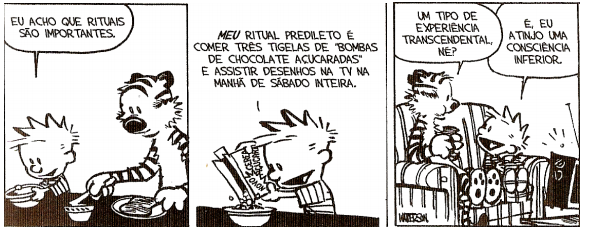Questões de Vestibular UEAP 2010 para Vestibular, Prova 1
Foram encontradas 60 questões
Leia a observação: Sempre escrevemos sen(π) para significar seno de π radianos.
Sobre o valor de y , sendo y = sen(3) podemos dizer que:
 , então, pode-se afirmar que o valor da
expressão E abaixo é :
, então, pode-se afirmar que o valor da
expressão E abaixo é : 
I- Sua Geometria é angular. II- Forma Ligações de Pontes de Hidrogênio. III- Solubiliza substâncias de baixa polaridade como, por exemplo, os óleos. IV- Apresenta ligações tipo covalentes polarizadas. V- Apresenta-se nos três estados físicos da matéria.
I- .... C (grafita) + ..... O2(g) -> ...... CO2(g) ∆H = - 94,1 kcal/mol; II- .....C (grafita) + ..... H2(g) + ...... O2(g) -> ..... C2H5OH(l) ∆H = - 66,2 kcal/mol; III- .... H2(g) + ......O2(g) -> ..... H2O(l) ∆H = - 68,3 kcal/mol.
Sabendo-se que a variação de entalpia (∆H) de uma reação qualquer depende somente dos estados iniciais dos reagentes e do estado final dos produtos, marque a alternativa que corresponde aos coeficientes mínimos para a correta estequiometria das reações I, II e III, assim como a quantidade de calor produzida na combustão de 9,2 kg de álcool etílico líquido produzido [C2H5OH(l)], a partir dos coeficientes mínimos encontrados.
Os compostos:

Pertencem, respectivamente, às funções orgânicas:
Na reação abaixo:

O produto X obtido é:
LÉGEIN
“O rio incendiado de Heráclito fluichameja por todos os lados como verbum como ratio como mundo e mel amargodoce”
(Herbert Emanuel, do livro Nada ou quase uma Arte. São Paulo: Ed. Scortecci, 1997.)
O texto e o poema acima expressam algumas características do pensamento do filósofo pré-socrático Heráclito de Éfeso (séc. VI a.C). Com base na leitura dos mesmos e de seus conhecimentos de filosofia, marque a alternativa incorreta.

A tira acima possibilita-nos refletir sobre os meios de comunicação de massa e a
influência que exercem sobre os indivíduos. Um dos grandes teóricos da
chamada Escola de Frankfurt, Teodor Adorno, dedicou parte de sua obra à
análise deste tema. Com base nos seus conhecimentos sobre a Escola de
Frankfurt, marque a alternativa correta.

I- Apesar da “distância histórica” da obra de Platão (427-347 a.C), a mesma continua exercendo influência nos dias de hoje devido aos temas que suscita, relacionados à liberdade, alienação, ceticismo, dentre outros.
II- No Mito da Caverna, Platão demonstra, alegoricamente, a dualidade da existência humana, o conflito entre realidade e aparência.
III- O papel do filósofo no Mito da Caverna é desmistificar as diversas construções da “realidade”.
IV- Para Platão, a condição de quem vive nas sombras é digna da compaixão do filósofo.
Sobre aculturação, com base no texto acima, é correto afirmar:
I- O fato social exterior é aquele que existe e atua sobre o indivíduo, independente de sua vontade ou de sua adesão consciente.
II- O fato social coercitivo só se manifesta no indivíduo se ele reagir à sanção. Portanto, depende da forma como o indivíduo se expressa.
III- O fato social é geral quando se repete em todos os indivíduos ou, pelo menos, na maioria deles. Nesse sentido, a generalidade se manifesta na natureza coletiva ou em um estado comum ao grupo.